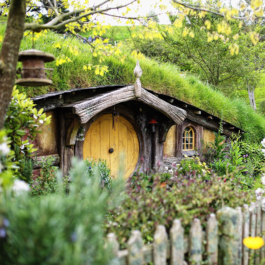Special Architecture Now
City Style: 15 Cities For Architecture Lovers
introRome, Athens, Istanbul… You’ve visited all the unmissable cities that laid the foundation for modern-day architecture, but if you just can’t get enough – and if learning about architectural styles in their local context is your thing – then book a trip to one of these lesser-known cities of outstanding architecture.
0/15
Special Architecture Now
City Style: 15 Cities For Architecture Lovers.
RavennaIf you’ve studied the architecture of Rome, Florence and Venice ad infinitum, then head over to Ravenna to admire its eight early Christian monuments (built between the 5th and 6th centuries AD), included in UNESCO’s World Cultural Heritage List. In particular, the Basilica of San Vitale is a stellar example of Byzantine architecture in Italy, fusing elements of both Western and Eastern traditions. The church’s famous mosaics alone are worth the trip. [Photo: Wikimedia Commons]
1/15
Special Architecture Now
City Style: 15 Cities For Architecture Lovers.
BathDuring the Georgian era (1714 to about 1837), Britain’s high society flocked to Bath to soak in the natural hot springs and socialise, just like the Romans had done many centuries before them. The harmonious Neoclassical architecture designed during this time reflected the ambitions of its main architects to create an elegant spa destination. Its buildings are erected from honey-coloured Bath limestone – don’t miss the Royal Crescent, a row of 30 terraced houses; the Circus, a street of townhouses forming a circle; and the Bath Assembly Rooms, built as meeting rooms for the A-listers at the time. Start your visit at the Museum of Bath Architecture.
2/15
Special Architecture Now
City Style: 15 Cities For Architecture Lovers.
BudapestTrends can come and go quickly, and that’s not just a recent phenomenon. Take Art Nouveau, for example: it was so hot from around 1890, but by 1910, it was so not. In Budapest, however, many fine examples of this style have escaped the wrecking ball. Known as Szecesszió, the style incorporated traditional Hungarian, Transylvanian and sometimes Asian elements, making it distinctly eclectic. Architect Ödön Lechner used brightly coloured ceramic roof tiles and freely borrowed oriental motifs for the Museum of Applied Arts, the Royal Postal Savings Bank and other buildings in the city. Another highlight is the late Art Nouveau Hotel Gellért, with its famous Gellért Baths that were fully restored in 2008. [Photo: Fred Romero/Flickr]
3/15
Special Architecture Now
City Style: 15 Cities For Architecture Lovers.
AmsterdamForming concentric rings, the canal system in Amsterdam’s historic centre is one of the first long-term urban planning projects in history. Construction started in 1613 in the northwest and continued eastwards all throughout the Dutch Golden Age. In the early decades of the 17th century, the Amsterdam Renaissance aesthetic was en vogue – a style that wasn’t bothered by Renaissance architecture theory, but rather abundantly applied decorative elements. From 1625, however, the more sober Dutch Baroque was preferred. The changes in style and taste are best illustrated by the decorated gables of the canal houses, used to cover up ordinary pitched roofs. Architour, a local company led by an architect and an architecture historian, provides excellent walking tours to get a better understanding of this UNESCO Heritage Site.
4/15
Special Architecture Now
City Style: 15 Cities For Architecture Lovers.
ParisWhile the action-packed history of Paris strongly influenced its architecture over the centuries, no era had more impact on the city’s layout than the Second Empire (1852-1870). Commissioned by Napoleon III, prefect Baron Haussmann radically transformed the city, creating airy avenues – and demolishing entire neighbourhoods in the process. The cream-coloured limestone apartment buildings lining the boulevards were constructed according to strict rules, establishing a homogenous look. Context Travel offers a three-hour Haussmann tour led by an architectural historian, to give visitors an in-depth understanding of how his urban planning revolution changed the face of the city.
5/15
Special Architecture Now
City Style: 15 Cities For Architecture Lovers.
MiamiPastel hues, geometric patterns, rounded edges, symmetry, relief ornamentation with flora and fauna patterns: Miami Art Deco come to mind yet? The Art Deco Historic District in Miami Beach boasts over 800 unique buildings constructed between 1923 and 1943. To get a better understanding of this style – and its slightly different substyles – visit the Art Deco Museum and take a walking tour offered by the Miami Design Preservation League, the same non-profit organisation that fought to preserve the long-neglected buildings in the area during the 1970s.
6/15
Special Architecture Now
City Style: 15 Cities For Architecture Lovers.
ChicagoChicago is a proverbial candy store for architecture lovers, where you can take in one masterpiece after another. Starting in the 1880s, the city experienced a construction boom – and the new way of building was up. Known as the ‘Commercial School’ (1879-1910), a group of architects – most notably designer-engineer William Le Baron Jenney – constructed the city’s first skyscrapers, facilitated by technological developments such as iron-framed structures and innovations like elevators and electric lighting, all of which enabled them to aim higher and higher. Learn all about the early high-rises during a tour led by the Chicago Architecture Center.
7/15
Special Architecture Now
City Style: 15 Cities For Architecture Lovers.
BrasiliaNever before was a metropolis built from scratch: in the 1950s architect Oscar Niemeyer and urban planner Lúcio Costa took on the herculean task of designing and building the new capital of Brazil. The result, Brasília, is now the only 20th-century city that’s been declared a UNESCO World Heritage Site; all thanks to its modernist architecture and artistic urban planning. The city’s futuristic-looking buildings, such as the Metropolitan Cathedral and the National Congress building, are particularly impressive and exemplary of the Brazilian modernist movement. Architecture tour company Artchitectours has designed special tours to fully appreciate and understand this modernist tour de force.
8/15
Special Architecture Now
City Style: 15 Cities For Architecture Lovers.
ChandigarhCapital of the northern Indian states of Punjab and Haryana, Chandigarh was built from the ground up to reflect peace and democracy after the bitter era of partition. In the 1950s, Swiss-French modernist architect Le Corbusier was asked to plan the city and design its most emblematic buildings, most notably the Capitol Complex. Other modernist architects, both international and Indian, also left their mark on the city that is now widely considered one of the greenest, most liveable cities in India. [Photo: duncid/Wikimedia Commons]
9/15
Special Architecture Now
City Style: 15 Cities For Architecture Lovers.
ColumbusYou wouldn’t quite expect to find an architectural jewel smack in the middle of the American Midwest. Yet Columbus, Indiana, a town with 44,000 inhabitants, boasts a number of structures designed by the cream of the crop of mid-century modernist architects, such as Eero Saarinen, Richard Meier, Kevin Roche and I.M. Pei. They’re there thanks to the generosity and vision of industrialist Irwin Miller. The Columbus Area Visitors Center – operating under the slogan “unexpected.unforgettable” – offers architecture bus tours, which take in over 30 significant structures.
10/15
Special Architecture Now
City Style: 15 Cities For Architecture Lovers.
HavanaHavana is a delightful hodgepodge of architectural styles, each one adapted to suit Cuban conditions. Tour the streets of Old Havana and modern Havana to explore the dialogue between styles from Colonial to Baroque and Art Deco to Modernist, as well as the influence of the Cuban Revolution on the architecture of the city. While the historic centre is listed as a UNESCO World Heritage Site, it can’t be ignored that many parts of the city, sadly, are crumbling and in dire need of repair.
11/15
Special Architecture Now
City Style: 15 Cities For Architecture Lovers.
Tel AvivFounded in 1919 in Germany, the Bauhaus School spurred a design movement that spread all over the world. To house the large numbers of European Jews emigrating to Tel Aviv after the rise of the Nazis, Bauhaus-trained architects planned and built The White City – around 4,000 buildings designed in this so-called International Style, adapted to the unique cultural and climatic conditions of the city. One example: large glass panes commonly used in Europe were replaced with smaller strip windows to prevent buildings from heating up too much. The Bauhaus Center offers educational walking tours of the area. [Photo: Bauhaus Center]
12/15
Special Architecture Now
City Style: 15 Cities For Architecture Lovers.
CopenhagenTo get an overview of the best of contemporary architecture, and maybe get an idea where it’s headed, join the ‘Capital of Cool’ tour by the Danish Architecture Center. The tour explores around 10 buildings in Copenhagen, all constructed within the past 10 years and pushing the boundaries of sustainable building principles. Two of the newest and most creative buildings feature the use of upcycled materials: Lendager Group’s Resource Rows used bricks from a demolished Carlsberg beer factory, while their Upcycle Studios used windows from a demolished Jutland warehouse. The tour ends at 8 House, one of the most famous projects from Bjarke Ingels Group.
13/15
Special Architecture Now
City Style: 15 Cities For Architecture Lovers.
CartagenaAlthough independence brought forth an eclectic Republican style, the predominant architectural aesthetic of Colombia’s Cartagena de Indias is the one dating back to the Colonial Era, reflected in military, civil and religious buildings. Marelvy Peña Hall leads architecture tours in The Old City, a UNESCO World Heritage Site since 1984. Surrounded by thick stone walls, the Old City is home to many colourful Colonial buildings (built in the 16th-18th centuries), but the tour will also pass by a number of buildings that display an interesting eclecticism.
14/15
Special Architecture Now
City Style: 15 Cities For Architecture Lovers.
KyotoThe centre of Japanese culture for over 1,000 years, Kyoto has largely preserved its rich history while becoming one of the most advanced cities in the world. With 17 structures on UNESCO’s World Heritage List, most wooden shrines, temples and castles have slightly curved, so-called ‘hidden’ roofs and are built in harmony with their natural surroundings. Although many of the original structures haven’t stood the test of time, Japanese tradition prescribes that restoration and reconstruction follows the intended design to a T, so you can appreciate them in their intended form. Take a tour with Curated Kyoto to learn more about the old, in relation to the new.
15/15
















Sorry, the comment form is closed at this time.